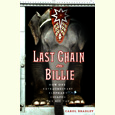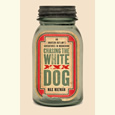History Begins at Home
In The Washingtons of Wessyngton Plantation, John F. Baker Jr. uncovers the story of his own family—and the entire American experiment
When Joel F. Baker Jr. launched into what became a three-and-some-decades-long research project on the history of his family on his mother’s side, writing a book was most certainly the farthest thing from his thoughts. He was in the seventh grade, after all. But he was driven by a curiosity that never waned in subsequent years—a curiosity that girds the upbeat spirit of The Washingtons of Wessyngton Plantation, a rare hybrid of oral history, traditional chronicle, and memoir. In it Baker brings alive both antebellum and post-bellum life on a quintessentially Middle Tennessee plantation, tightly weaving throughout the quality of urgency that has characterized his life’s pursuit.
It was a picture in his seventh-grade social studies textbook—in a chapter called “Black Tennesseeans”—that set Baker, born and raised in and around Springfield, Tennessee, on his path. “In the 1970s little was taught in public schools about black history other than the Civil War period,” he writes. And the two seated figures in the photo reminded him of people he knew. The woman of the dignified-looking pair, whose image now graces the cover of The Washingtons, looked a lot like Baker’s grandmother, Sallie Washington Nicholson, then living in Chicago.
 On her next trip back to Tennessee, Nicholson invited Baker out to visit her siblings in nearby Cedar Hill, where she showed him the same 1891 photograph he’d found in his history book. That picture, a newspaper reproduction, included a list of the names of the former slaves of Wessyngton farm, known more commonly by then as “Washington.” The seated figures in the picture, it turned out, were in fact Nicholson’s grandmother and grandfather, Emanuel and Hettie Washington—Baker’s own great-great-grandparents.
On her next trip back to Tennessee, Nicholson invited Baker out to visit her siblings in nearby Cedar Hill, where she showed him the same 1891 photograph he’d found in his history book. That picture, a newspaper reproduction, included a list of the names of the former slaves of Wessyngton farm, known more commonly by then as “Washington.” The seated figures in the picture, it turned out, were in fact Nicholson’s grandmother and grandfather, Emanuel and Hettie Washington—Baker’s own great-great-grandparents.
Wessyngton—15,000 acres at its largest, just prior to the Civil War—was located about ten miles northwest of Springfield. Many of the 274 slaves on the plantation at its pre-Civil War height were either brought there or descended from slaves brought to Tennessee by Joseph Washington, a “close cousin” of the founding father of the American Republic, when he ventured into the frontier in 1796 to make a new life. From the Washington Family Papers archive at the Tennessee State Library and Archive in Nashville, Baker discovered many of the pieces of the “jigsaw puzzle” of a story he would spend the next thirty years putting together—from the plantation’s small beginnings to its heyday, at the time of the Civil War, as the biggest tobacco-producing outfit in the entire country.
Baker’s depiction of slave life and culture, on and off the plantation, is both meticulous and moving, based not just on archival research but also on extensive interviews with the slaves’ descendants. Where appropriate, particularly at the outset and conclusion of the book, Baker drops in literal transcriptions of interviews to highlight particular voices among the protagonists’ descendants. One of them is Mattie Terry, born in 1889, whom Baker interviewed several times early on in his research. Terry lays out some of the realities of life at Wessyngton, remembering her own work in the “Big House” at Wessyngton well after the Civil War’s end.
Terry tells the story of Baker’s great-great-grandmother, Hettie Washington, who died in 1913. “Her funeral was held in the front yard … in front of the Big House. Hundreds of people were there,” she says. “The Washingtons were very fond of Aunt Henny and always treated those older slave people with great respect.”
Baker was fortunate to have the cooperation of the descendants of the white Washingtons, as well as that of his own family. His research benefited from a particular facet of plantation history, as well: the simple fact that most Wessyngton slave families remained together on the plantation in the antebellum period. While there were instances of “problem” slaves being sold in the New Orleans market, in most cases the white Washingtons respected the family unit among the slaves.
[This review originally appeared on February 2, 2010.]
Joel F. Baker Jr. will discuss The Washingtons of Wessyngton Plantation at the twenty-fourth annual Southern Festival of Books, held October 12-14 at Legislative Plaza in Nashville. All events are free and open to the public.


